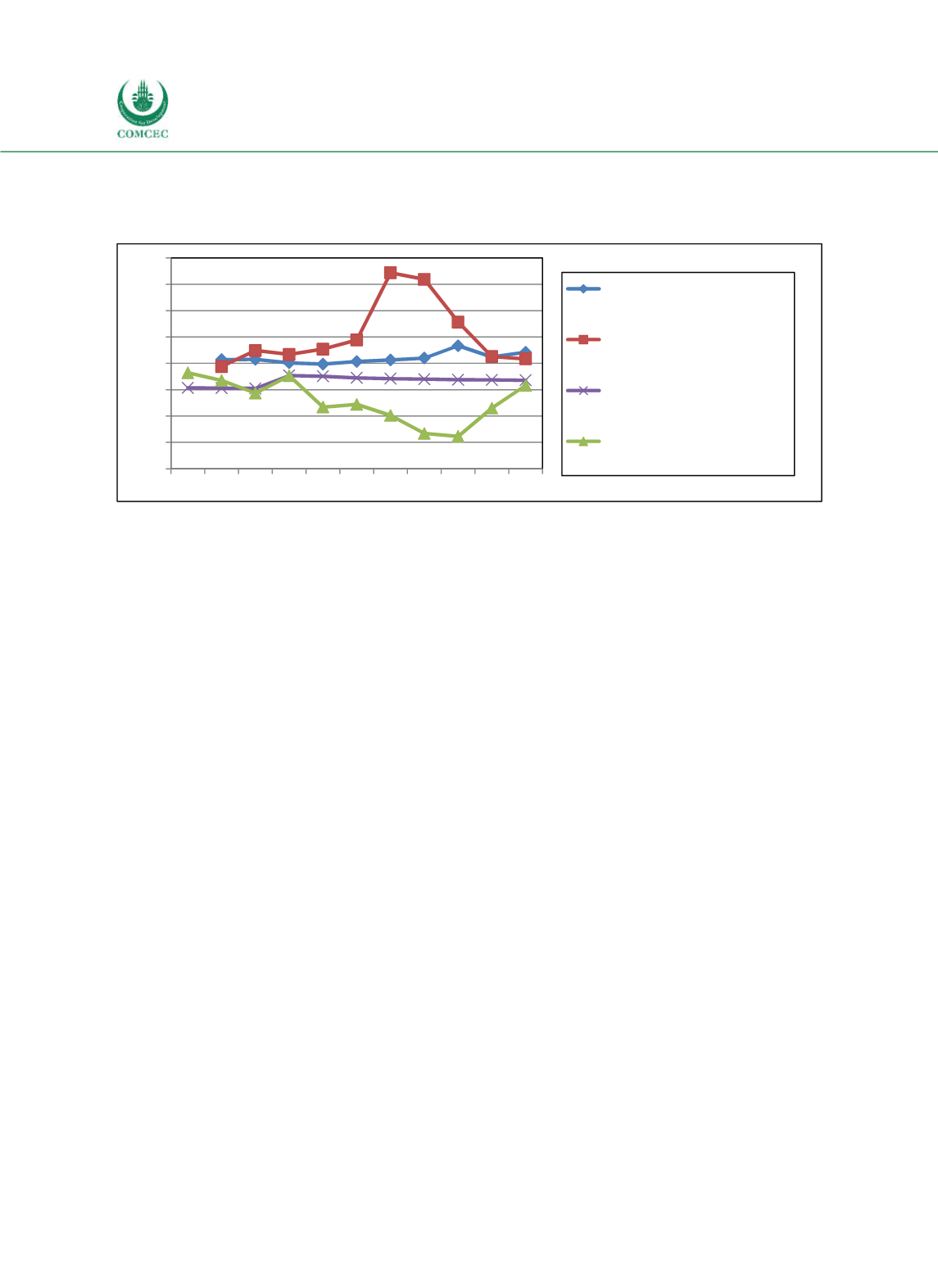

Improving Public Debt Management
In the OIC Member Countries
124
expected to continue to fall to single digits by 2017 (IMF 2014b), which would allow average
real rates of return to increase again.
Figure 4-24: Sudan - Rates of Return and Inflation
Sources: CBoS (2016a, 2016b), IMF (2007, 2010, 2012, 2013b, 2014a) calculations by the Ifo Institute.
The return on government securities depends on the public finance accounts of the
government, whereas the return of securities issued by the CBoS is determined in advance
(IMF 2013a). For the year 2015, the average return on GICs was equal to 20% p.a. (CBoS
2016b), while the GMCs market yield was 11.8% p.a. (CBoS 2016a). Currently GMCs are
expected to achieve a yield of 18% p.a. (CBoS 2016b). The average nominal rate of return on
foreign currency general government debt is much lower and more stable than the domestic
murabaha
profits margin and hovers at around 4% (see Figure 424).
Domestic debt market
The majority of Sudan’s general government debt is external (see Figure 423). Domestic
borrowing is likely to increase which would lead to additional macroeconomic risks as
borrowing from domestic banking sources is expected to increase inflation further (UNDP
2014, AEO 2012). In July 2016, the annual inflation rate stood at 16.5% (Abdelaziz and
Noureldin 2016).
The largest share of government
sukuk
is held by commercial banks (41%) followed by
companies and funds (25%) and the Central Bank of Sudan (22%). Only 12% of total
government
sukuk
is owned by individuals (IIFM 2016).
Foreign borrowing
Since 2008, the share of external public debt in total public debt has continuously grown from
around 80% to nearly 90% today. A huge part of this increase is the result of accumulated lateinterest as approximately 86% (2013) of Sudan’s external debt is in arrears (ADB 2014, EIU
2016). Due to U.S. sanctions, the unfinished “zerooption” agreement and the related high debt
of Sudan, external borrowing options are limited. In order to finance infrastructure and other
development projects, the government continues to seek loans from GCC states, as well as
China and India (UNDP 2014). A large share of Sudan’s external debt is owed to the Arab Gulf
states, in particular Saudi Arabia and Kuwait (Leo 2010, Sudan Tribune 2012). As of end 2013,
these and other NonParis Club Creditors represented the largest share of Sudan’s external
debt (see Figure 425). Paris Club creditors hold 32%, while the remainder is held by
-30
-20
-10
0
10
20
30
40
50
20062007200820092010201120122013201420152016
in percent
Murabaha Profits margin (%)
Inflation (%)
Average nominal rate of return
on foreign public debt (%)
Average real rate of return on
domestic public debt (%)
















